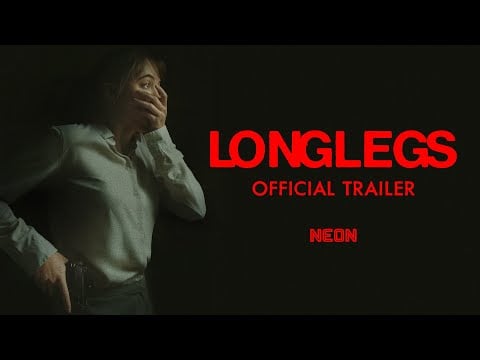Some movies define their genre in ways time can’t touch.
Go ahead and make a killer shark movie. You won’t lap 1975’s “Jaws.” The same holds for 1973’s “The Exorcist” (possession thrillers) and 1991’s “The Silence of the Lambs” (serial killer tales).
For a while, “Longlegs” evades “Silence’s” gargantuan shadow. It helps that we don’t get a full look at the killer in question, and director Osgood Perkins has us in the palm of his hand.
The thriller can’t sustain that early drumbeat of dread. The film’s final moments remind us why certain films are iconic while others merely tease that status.

Maika Monroe plays Lee Harker, an FBI agent with a keen puzzle-solving style. Her boss (Blair Underwood) assigns her to investigate a long-running case involving mutilated families. Clues are in short supply, but Lee’s early hunches pay off in a hurray.
Hmmm.
She appears to be on the Spectrum, and her strained ties with her mother (Alicia Witt) suggest a less-than-cheery childhood. This isn’t Clarice Starling, that’s for sure.
The more Lee probes the case, the more baffling it becomes. The scariest part for the young FBI agent? The killer may be connected to her in ways she can’t understand.
Longlegs Director Osgood Perkins Doesn’t Watch New Horror Movies https://t.co/UaMmQiwUaM
— ComingSoon.net (@comingsoonnet) July 12, 2024
Director Perkins (son of Anthony) lets us meet the killer from the jump. That’s Longlegs (Nicolas Cage, buried in ghastly makeup), a shambling mess of a man with a high-pitched voice. At first you’ll think “Longlegs” took a page out of “Lambs'” trans playbook, but it’s merely a deeply disturbed soul out for blood.
Ironically, the film spills less of it than you might expect.
We don’t get a full look at Longlegs right away, and that delayed reveal is the film’s secret weapon. We hear that voice, see those mannerisms and imagine a monster from our worst nightmares. Cage does the rest, and having his recognizable face buried under latex does the story a favor.
The first half of “Longlegs” is sublime, from the nonstop dread bleeding into the frame to Monroe’s arrested turn as Lee. Yet her character never evolves over the story, nor do we see fresh layers as her hunt marches on.
That’s not Monroe’s fault. Perkins’ script gets thinner when it should be taking shape.
View this post on Instagram
Serial killer stories have certain tropes, and “Longlegs” does its best to acknowledge and subvert them. Yet one key difference feels like a cheat, damaging the film’s critical scenes.
Said difference can’t be revealed without a gargantuan “spoiler alert” warning.
Perkins takes his time setting the story in motion, and that discipline mostly works in his favor. Later in the film that technique takes a precious turn, like the director puts too much faith in the story’s deliberation.
Modern films struggle to stick the landing, and “Longlegs” is a textbook case of just that. Mysteries are mostly resolved, but they’re unsatisfying and missing the tension so expertly arranged in the first act.
The finale also makes poor use of Cage, who neither embraces his inner “Mandy” nor keeps his natural energy under wraps. The balancing act is perfection, something that can’t be said of the film itself.
HiT or Miss: “Longlegs” is a cut above most horror films, but the story’s magnetism dims as we learn more about the serial killer’s m.o.
The post Why ‘Longlegs’ Isn’t the Next ‘Silence of the Lambs’ appeared first on Hollywood in Toto.
0 Comments